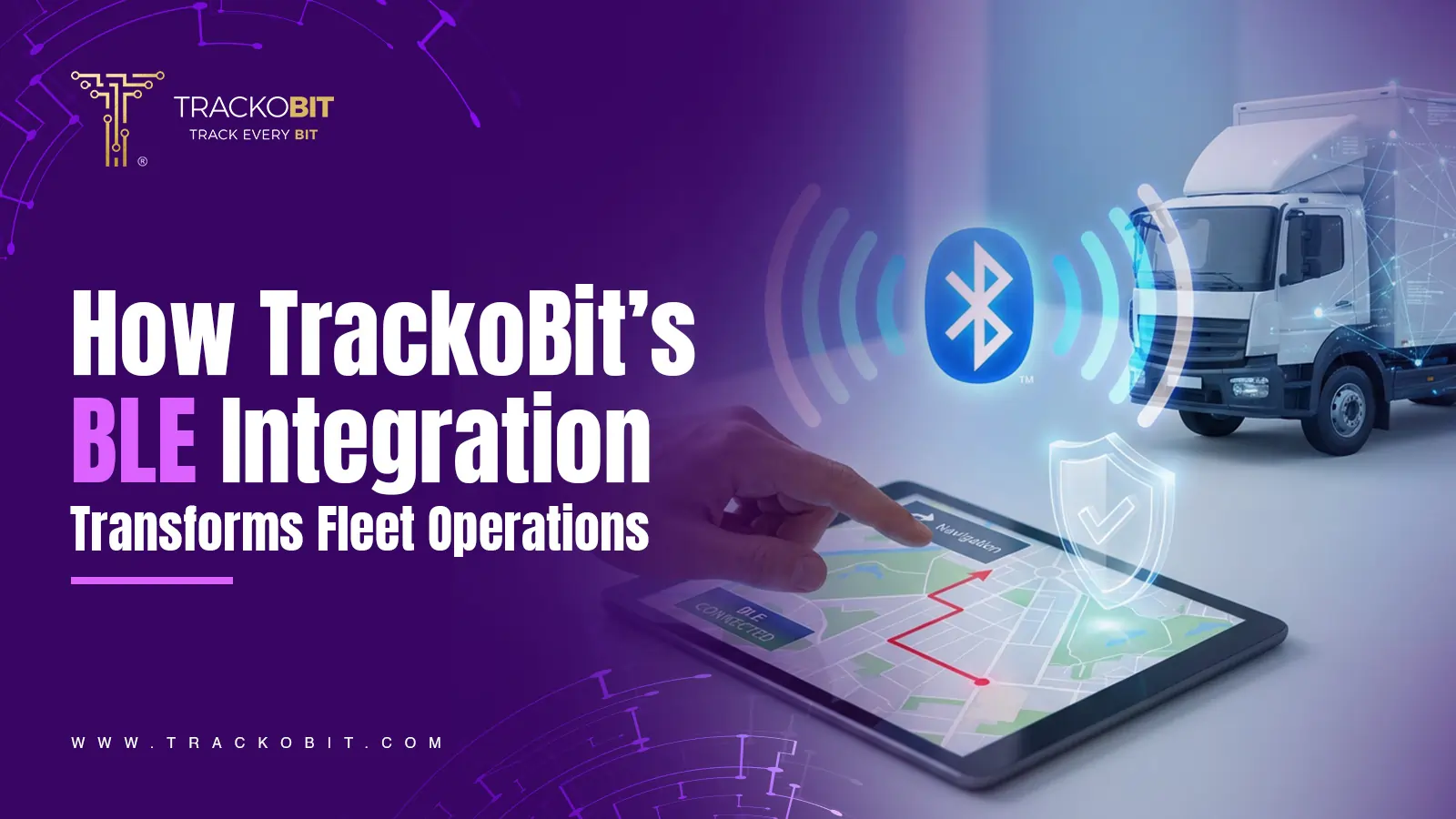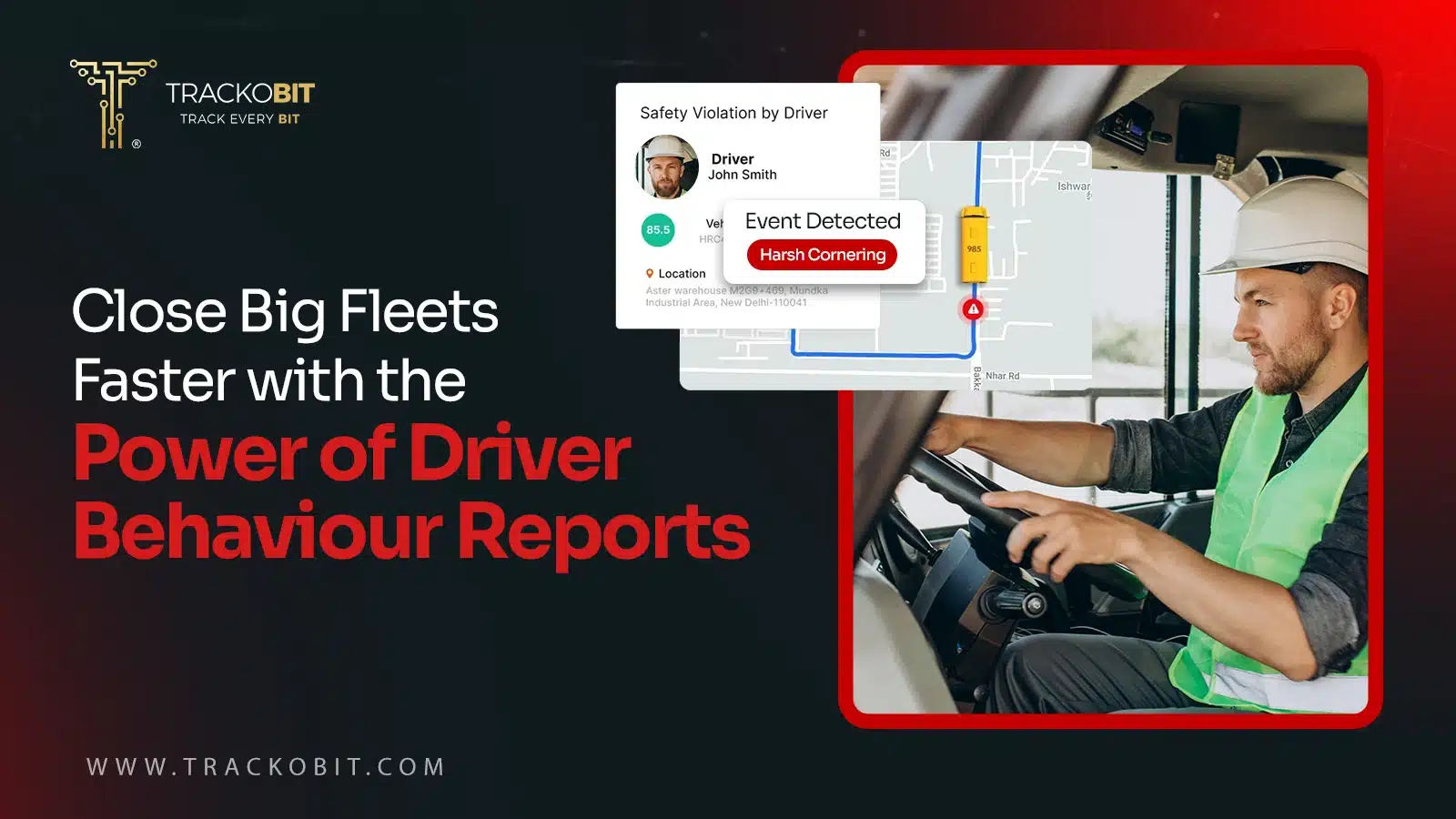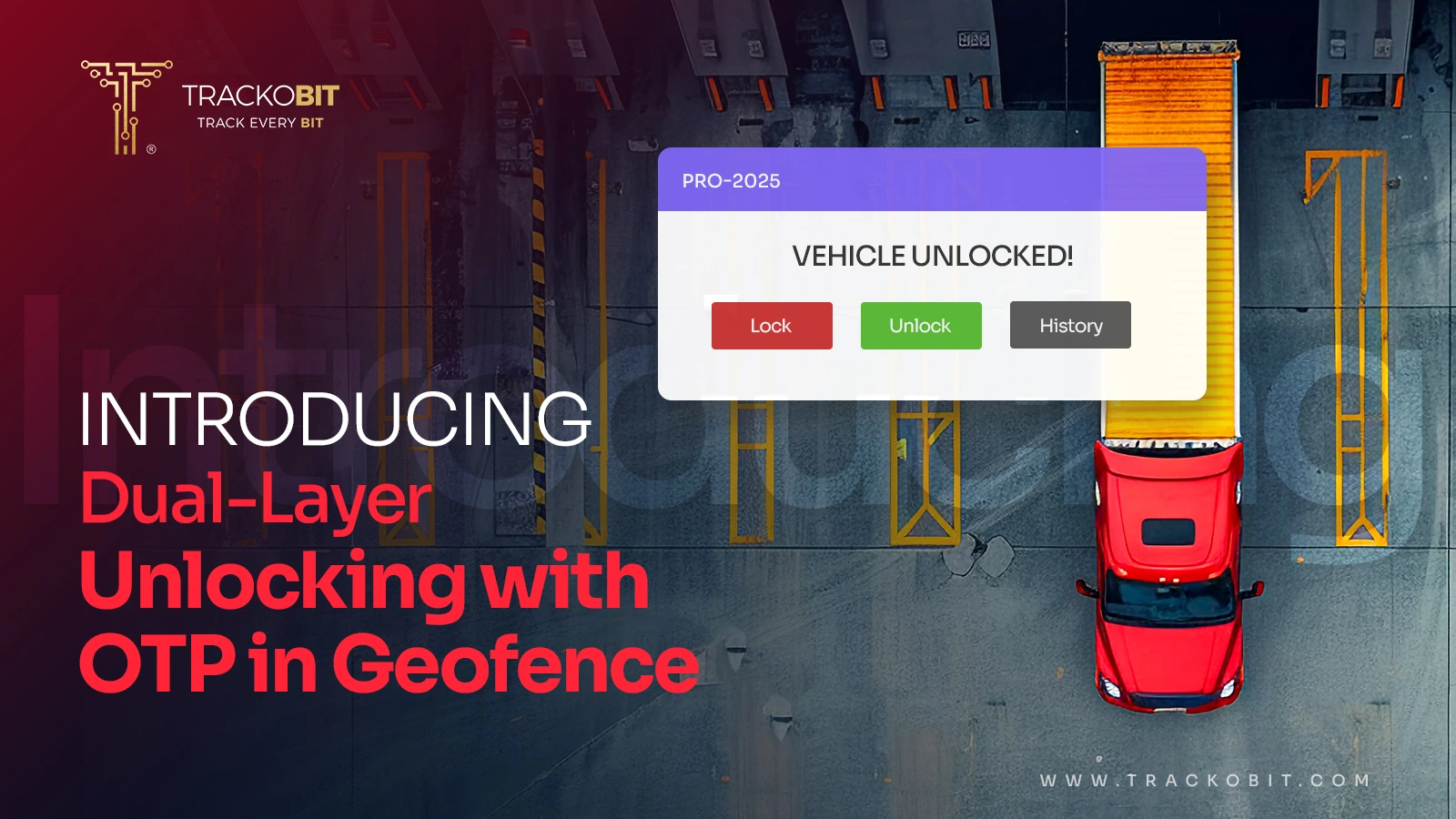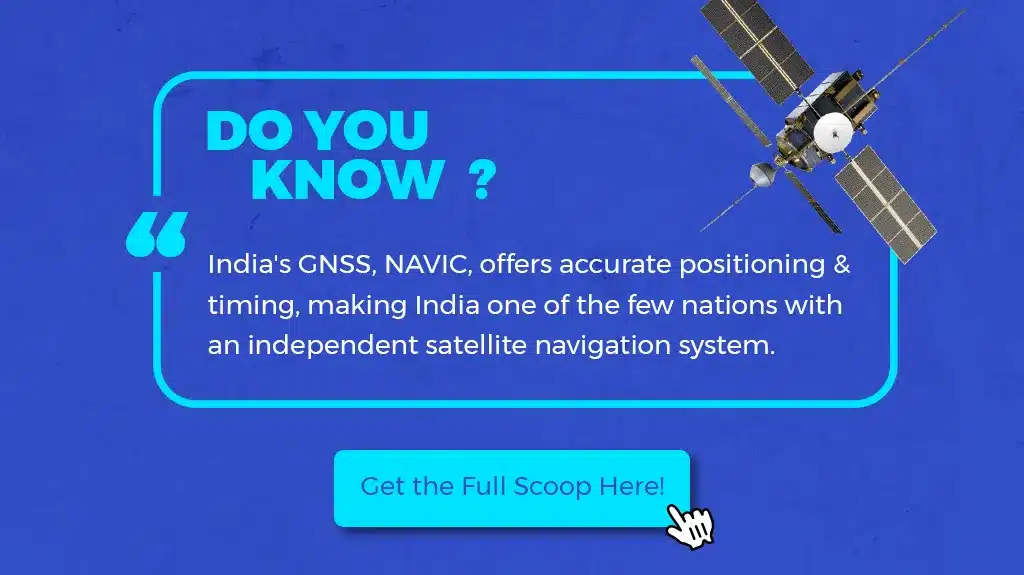-
TrackoBit
Manage commercial vehicles with the new-age Fleet Management Software
TrackoBit -
TrackoField
Streamline your scattered workforce with Field Force Management Software
TrackoField -
Features Resources
-
Blog
Carefully curated articles to update you on industrial trends. -
White Paper
Insightful papers and analysis on essential subject matters. -
Glossary
Explore an alphabetical list of relevant industry terms. -
What’s New
Get TrackoBit & TrackoField monthly updates here. -
Case Study
Explore the cases we solved with our diverse solutions. -
Comparisons
Compare platforms, features, and pricing to find your best fit.
-
About Us
Get to know TrackoBit: our team, ethos, values, and vision. -
Careers
Join the most dynamic cult of coders, creatives and changemakers. -
Tech Support
Learn about our technical support team and services in detail. -
Events
Check out the exhibitions where we left our marks and conquered. -
Contact Us
Connect with us and let us know how we can be of service.
How Does GPS Tracking Software Work?
- Author:Anvesha Pandey
- Read Time:3 min
- Published:
- Last Update: December 9, 2025
Table of Contents
ToggleGPS technology has been one of the greatest advancements in modern tracking systems. Explore how the GPS tracking software leverages GPS & brings wonders to the table.
Table of Contents
Toggle
The world today is more interconnected than ever, and GPS tracking software has become a necessity than ever. The software helps in enhancing efficiency & precision across industries.
From monitoring vehicles to tracking shipments, this powerful technology serves as an all-in-one solution that streamlines operations and improves accountability.
When it comes to fleet management, GPS tracking is the backbone of the entire operation. Now, the question arises of how the technology works without being complex yet delivering precision.
If you’re seeking to explore the ins and outs of GPS tracking software, you’re in the right place.
Let’s dive in and break down how it functions—starting with the basics!
What is a GPS Tracking Software?
GPS tracking software is a technology that leverages Global Positioning System (GPS) technology to monitor, track, and manage the real-time location & movement of vehicles, assets, or individuals.
It collects data from GPS trackers and presents it on an interface. The system provides features like real-time GPS tracking, trip history, detailed reports & more.
Simply put, the software helps you track objects. For fleet-centric businesses, it’s a vehicle. The
software receives the GPS data. This includes location, latitude, longitude, altitude, speed, direction, timestamp, distance traveled, geofence status, and device ID.
Read Blog – What is GPS and How Does GPS Work?
How does GPS tracking software work
How Does GPS Tracking Software Work? Step-by-Step Guide
For starters, GPS tracking software works by using GPS devices to collect real-time location data. This data is further transmitted to a central system for analysis and visualization.
The system provides insights through routes, reports & alerts. This further helps you monitor vehicles, assets, or consignments.
Step-by-Step Guide
Step 1- GPS Device Installation
The very first involves the installation of types of GPS devices. These devices help in capturing locational data through signals from GPS satellites orbiting the Earth.
Step 2- GPS Signal Reception
After installation, the GPS tracking devices begin capturing signals from multiple satellites in orbit. These signals provide data on the device’s exact location, speed & direction by triangulating the signals from at least three satellites.
Step -3 Data Collection
The device collects data such as latitude, longitude, time, speed & directions. Additionally, when the system is integrated with other IoT sensors, it helps you gain insights into other crucial data such as fuel levels, temperature, or engine status.
Step 4 – Data Transmission
Once data is collected, the device starts transmitting data through a communication network via GPRS, 3G, 4G, or Wi-Fi, to a centralized server. This is usually done at regular intervals.
Step 4- Data Processing
Once the software receives the transmitted data, it processes and stores it in the database. The servers then convert this raw data into actionable insights like real-time location, speed, routes, and halts.
Step 5- Data Visualization
The processed data is displayed on an interactive map within the software interface, typically through a web or mobile application. This map is updated in real-time, showing the exact location and movement of the tracked objects.
Step 6- Event Triggering
The best part of technology is it can be easily configured with rules. These can be speed limits, geofences, or maintenance schedules. When the vehicle or asset being tracked violates these events, the software triggers an alert.
Step 7- Data Storage
Now, it’s time for data storage. The data collected from the GPS devices is stored in a secure cloud or on-premises database. This ensures historical tracking data is accessible for review, reporting, and analysis.
Step 8- Generation of Reports
The software helps users generate reports on vehicle usage, driver behavior & more.
It includes tools for data analysis. These tools aid in planning routes, monitoring efficiency, and reducing costs. This allows businesses to improve fleet operations effectively.
💡Knowledge Point
What is Triangulation in GPS?
In the context of GPS, triangulation involves calculating a position on Earth by measuring the distance to at least three GPS satellites. This is done using signals transmitted by the satellites, which allow the GPS receiver to compute its distance from each one. By combining these distance measurements with the known positions of the satellites, the receiver can determine its exact location.
The Top 5 Benefits of GPS Tracking Software
The benefits of the technology are undeniable, offering businesses extensive advantages.
Key benefits include
1. Better Fleet Management
GPS tracking software provides you with real-time visibility into locations, routes, and schedules. It helps optimally plan routes, ensuring that drivers take the most efficient paths. Further resulting in saving time & fuel.
Additionally, you can monitor driver performance. By keeping track of this businesses can ensure timely deliveries. Further, you can reduce inefficiencies like excessive idling, abrupt driving patterns & more.
2. Better Cost Saving
Saving on cost is one of the prime goals of businesses. The software helps businesses save a lot of money. Businesses reduce fuel consumption through optimized routes & minimizing idle times.
Additionally, the system sends maintenance alerts. This allows businesses to maintain vehicles before minor issues transform into costly repairs. This proactive approach leads to significant cost savings in the long run.
3. Enhanced Safety
The safety of both the drivers & the consignment is by far one of the most prominent concerns of fleet-centric businesses. When GPS tracking software is paired with driver behavior monitoring software, this can help gauge drivers’ skills and identify patterns of speeding and harsh braking.
4. Improved Productivity
Undoubtedly, increasing productivity is a time & money saver. The solutions help in reducing idling time & optimizing schedules, increasing driver productivity.
In fact, with the help of a GPS tracking system, dispatchers can assign tasks more efficiently. This ensures quick TAT & also enhances customer satisfaction.
Overall, with better time management, productivity across the fleet improves significantly.
5. Theft Prevention & Asset Security
Vehicle & consignments both of these are considered to be the most valuable assets for your business.
Therefore, it should come as no surprise that theft prevention is one of the most valuable features of GPS tracking. In fact, there are numerous ways GPS tracking assures asset protection.
The system provides you with real-time locational data. This data can be used to recover stolen vehicles, assets, or equipment quickly.
This data can be further used for alerting law enforcement and tracking the stolen items, reducing the risk of significant loss.
After knowing all the benefits of an ideal GPS tracking software you still looking for reasons to invest in one
So, in the next section of this piece- let’s unfold the WHY should you invest in one.
How Can an Ideal GPS Tracking Software Help You Monitor Driver Behavior, and Reduce Fuel Costs?
Well, it will never be wrong to say investing in GPS tracking software is one of the smartest decisions a fleet-centric business can take. It enhances operational efficiency, reduces costs, and streamlines fleet management. This takes place with the help of real-time tracking, route optimization, and data-driven insights.
That’s just not all, the power detailed reports are more like the cherry on the cake. With reports on routes, fuel consumption, & driver performance, you get access to real-time insights. This accelerates making more informed decisions.
One of the key reasons to invest is better customer satisfaction. By utilizing real-time data, businesses can provide clients with accurate ETAs, ensuring timely updates and minimizing uncertainties. This level of precision enhances transparency, fostering trust between clients and businesses.
Another prominent reason is regulatory compliance. The system helps ensure that your fleet adheres to local & international regulations, such as HOS compliance or emission standards.
Which is the Best GPS Tracking Software?
We agree that choosing the right GPS tracking software can feel overwhelming, especially with so many options to consider. In fact, the best software clearly depends on your specific needs, and each & every need can vary.
But if we were to recommend one standout solution, it would undoubtedly be TrackoBit.
Why TrackoBit?
It comes with a comprehensive suite of solutions that can be customized according to your business requirements. Our GPS tracking software not only helps you monitor your fleet but also efficiently monitor & manage your fleet.
That’s just not all our dedicated support team is always on hand to resolve any issues, ensuring a smooth experience every step of the way.
Why wait more?
Schedule a free demo!
Explore, try & enjoy the benefits!
FAQs
-
How do GPS trackers function?
GPS trackers use signals from satellites to determine the location of a vehicle or asset. This data is then transmitted to a central server for real-time tracking and monitoring.
-
How accurate is GPS tracking?
GPS tracking is generally accurate to within a few meters,. At times the accuracy can vary depending on factors like satellite coverage and environmental conditions (e.g., tall buildings or dense forests).
-
Is GPS tracking software safe and secure?
GPS tracking software is secure, with encrypted data transmission and access control features. It provides businesses with the ability to monitor assets and vehicles safely, reducing the risk of theft or unauthorized access.
Anvesha is a communication specialist at TrackoBit. With a strong background in media and communications, she adds much-needed balance and brevity to TrackoBit’s... Read More
Related Blogs
-

Plug, Pair, Perform TrackoBit Introduces BLE Sensor Integration
Tithi Agarwal November 26, 2025TrackoBit’s BLE Sensor Integration enables wireless, real-time monitoring with faster installs and accurate insights. It improves fleet efficiency, visibility, and…
-

How to Use Driver Behavior Reports as a Sales Hook to Close Big Fleets
Tithi Agarwal October 16, 2025TrackoBit’s driver behavior reports empower fleet providers to win big contracts by showcasing safety, efficiency, and measurable ROI.
-

TrackoBit’s Unlocking in Geofence with OTP: Elevating Cargo Protection
Tithi Agarwal September 16, 2025TrackoBit’s latest feature – Unlocking in Geofence with OTP lets you lock out theft and unlock cargo only at the…
-

The Rise of Electric Fleets: Challenges and Opportunities for Businesses
Tithi Agarwal September 4, 2025The global fleet landscape is poised for a decade-long transformation. This change is being powered by electricity. Logistics-led businesses are…

Subscribe for weekly tips to optimize your fleet’s potential!
Your inbox awaits a welcome email. Stay tuned for the latest blog updates & expert insights.
"While you're here, dive into some more reads or grab quick bites from our social platforms!"Stay Updated on tech, telematics and mobility. Don't miss out on the latest in the industry.
We use cookies to enhance and personalize your browsing experience. By continuing to use our website, you agree to our Privacy Policy.



































